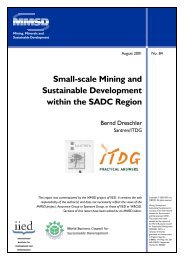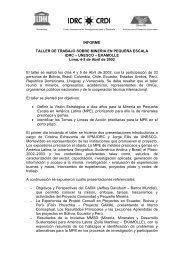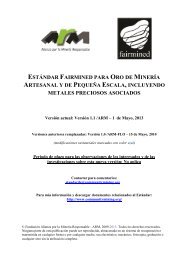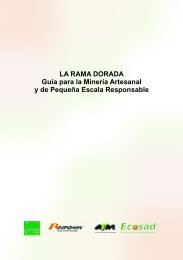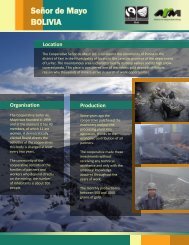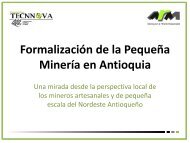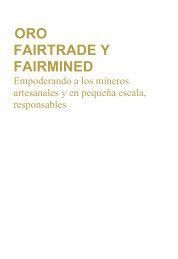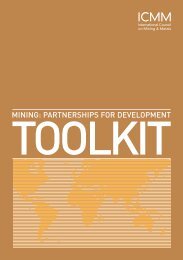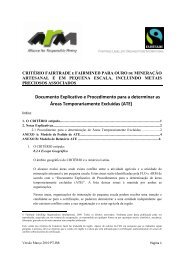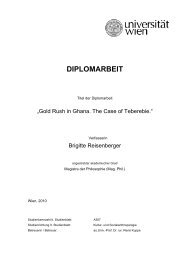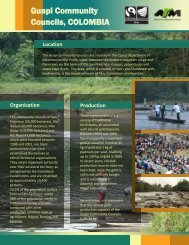A Poisonous Mix - Human Rights Watch
A Poisonous Mix - Human Rights Watch
A Poisonous Mix - Human Rights Watch
Create successful ePaper yourself
Turn your PDF publications into a flip-book with our unique Google optimized e-Paper software.
The Minimum Age Convention also permits light work from the age of 13. Light work is defined<br />
as work “which is not likely to be harmful to their health and development; and not such as to<br />
prejudice their attendance at school, their participation in vocational orientation or training<br />
programs […] or their capacity to benefit from the instruction received.” 53<br />
The Right to Education<br />
Both the CRC and the ICESCR lay down the principle of free and compulsory primary<br />
education. 54 In addition, higher education, including secondary schooling as well as<br />
vocational training, should be made available and accessible to all. 55 States are required<br />
to protect children from work that interferes with their education. 56<br />
While the rights under the ICESCR are subject to progressive realization, states have a<br />
“minimum core obligation to ensure the satisfaction of, at the very least, minimum<br />
essential levels of each of the rights.” These are not subject to progressive realization but<br />
have to be fulfilled immediately. 57 In particular, states have to “provide primary education<br />
for all, on a non-discriminatory basis. 58 They also have to ensure that primary education is<br />
free of charge and compulsory. To realize the right to primary education, states have to<br />
develop and implement plans of action; where a State party is clearly lacking in financial<br />
resources, the international community has an obligation to assist. 59<br />
The CRC urges states to implement measures, where necessary, within the framework of<br />
international cooperation. 60 Similarly, the African Charter on the <strong>Rights</strong> and the Welfare of<br />
the Child provides that “every child has the right to an education” and stipulates that free<br />
and compulsory basic education should be achieved progressively. 61<br />
53 Minimum Age Convention, art. 7.<br />
54 CRC, art. 28(1)a; ICESCR, art. 13(2)a. The Worst Forms of Child Labor Convention, art. 7, also stipulates that States shall<br />
take measures to “ensure access to free basic education.”<br />
55 CRC, art. 28; ICESCR, art. 13.<br />
56 CRC, art. 32.<br />
57 UN Committee on Economic, Social and Cultural <strong>Rights</strong> (CESCR), General Comment No. 3, art. 2, para. 1, The Nature of<br />
States Parties Obligations, UN Doc. E/1991/23, annex III at 86 (1990), para. 10.<br />
58 CESCR, General Comment No.13, art. 13, The Right to Education, UN Doc. E/C.12/1999/10 (1999), para. 57.<br />
59 CESR, General Comment No.11, Plans of Action for Primary Education, UN Doc E/C.12/1999/4 (1999), paras 6-9.<br />
60 CRC, art. 4.<br />
61 African Charter on the <strong>Rights</strong> and Welfare of the Child, art. 11. The Protocol to the African Charter on <strong>Human</strong> and<br />
People’s <strong>Rights</strong> on the <strong>Rights</strong> of Women in Africa urges states to “promote the enrolment and retention of girls in schools<br />
and other training institutions” (art 12, 2(c)), http://www.africaunion.org/root/au/Documents/Treaties/Text/Protocol%20on%20the%20<strong>Rights</strong>%20of%20Women.pdf<br />
(accessed September 8, 2011).<br />
A POISONOUS MIX 24



